Alberta’s 6 Education Pathways: A Model for School Choice in Canada
Alberta’s education system is unlike any other in Canada—not just in structure, but in outcomes. While most provinces operate within a fairly traditional divide between public and private schools, Alberta has developed an educational model defined by diversity, flexibility, and real choice. In fact, it is the most pluralistic education system in the country, offering families six distinct, publicly supported pathways to educate their children.
These include:
- Charter schools, publicly funded and independently operated
- Separate Catholic school boards, constitutionally protected and fully funded
- Alternative Programs Inside Public Schools
- Francophone school authorities, supporting Alberta’s French-speaking communities
- Home education with some public funding
- Independent Schools at 70% of Public Funding
This level of structural diversity is unmatched anywhere else in the country—and yet, Alberta doesn’t just offer more options; it also delivers strong outcomes. According to the OECD’s PISA 2022 assessment of 15-year-olds across 81 countries, Alberta students consistently perform at or above the Canadian average in key academic domains: mathematics, reading, and science.
While the rest of Canada largely oscillates between public and private systems, Alberta’s model is built on institutional pluralism—meaning multiple types of schools exist with public support, allowing families to align education with personal values, languages, learning needs, or religious beliefs.
Let’s break down each stream:
- Charter Schools: Publicly Funded, Independently Operated
Alberta is the only province in Canada that offers publicly funded charter schools. Unlike traditional public schools, charter schools aren’t governed by local school boards. Instead, each operates under its own independent board, giving them the flexibility to innovate with teaching methods, school culture, and specialized programming.
Some charter schools focus on STEM education, while others emphasize arts, classical learning, or project-based approaches. This model provides rare access to innovative, mission-driven education without the financial barrier, making Alberta a national leader in educational choice and experimentation.
- Catholic Schools: A Separate, Public System
Along with Ontario and Saskatchewan, Alberta still runs a separate, fully funded Catholic school system. These schools are protected by the Constitution and allow families to choose a faith-based education.
It’s a big part of Alberta’s education story, blending tradition with choice.
- Alternative Programs Inside Public Schools
Even within the regular public system, you’ll find a lot of variety. Alberta school boards offer alternative programs that reflect different cultures, values, and interests.
That means public schools focused on the arts, religion, or language immersion, like Islamic, Jewish, or Christian programs, are all part of the mix. Parents can stay in the public system while still picking something that fits their family’s needs.
- Francophone Schools
French-speaking families aren’t left out. Alberta has a strong publicly-funded Francophone school system. These schools help preserve the French language and culture and support Canada’s bilingual framework.
They’re an important part of the province’s commitment to linguistic diversity.
- Homeschooling with Support
Alberta is also the most supportive province for homeschooling. Families who homeschool get some public funding to cover materials and resources.
This makes homeschooling a real, practical option in Alberta.
- IndependentSchools with Public Support
Independent schools in Alberta get up to 70% of the per-student base education funding public schools receive. They don’t get help with buildings, but the funding helps keep tuition more affordable.
These schools come in all shapes—religious, academic, Montessori, Waldorf, STEM-focused, and more. If there’s a specific approach you’re looking for, chances are you’ll find it. Click this link to find an independent school in Alberta that fits your needs: https://educatedchoices.ca/find-a-school/
The Rules Behind It All
With all this variety, things can get complicated—especially when it comes to independent schools.
There are three main types:
- Registered: They meet basic standards but get no funding.
- Accredited, non-funded: They follow more rules and hire certified teachers but still get no government funding.
- Accredited, funded: These get up to 70% of the operational funding public schools receive, but they must follow the government curriculum and staffing rules.
Some funded schools are focused on special education. Others preserve culture through heritage language programs.
But the rules can be tough.
It’s important that bureaucratic processes don’t hinder the ability of parents to access or start schools of choice. Streamlining the new school accreditation process, simplifying annual reporting requirements, and appropriately limiting the scope of regulatory and legislative oversight are ways that the system can further improve.
Who’s Running These Schools?
Most independent schools in Alberta are run by non-profits, or charities. They’re legally required to be not-for-profit if they want any public funding.
Many of these schools fill gaps in the public system. They serve families looking for faith-based education, hands-on learning, education that addresses specific learning challenges, or a more arts-focused approach.
The Numbers Tell the Story
Right now, Alberta has:
- 191 independent schools
- 151 independent school authorities
- Over 56,000 K–12 students in independent schools (including children in ECS programs, and home education students registered with an independent school)
- In total around 6.8% of students in Alberta are registered with an independent school. To learn more about Alberta student population statistics, click this link: https://www.alberta.ca/student-population-statistics#jumplinks-0
Independent schools have grown by more than 50% over the last 25 years. That’s double the growth rate of public schools. Clearly, school choice matters to Alberta families.
Why It All Matters
Alberta’s education system isn’t one-size-fits-all. It’s a mosaic of choices—charter schools, Catholic schools, Francophone programs, homeschooling, and a wide range of independent options.
There are challenges, especially with funding rules and red tape. But the point is this: Alberta gives families real options. And that kind of choice is rare.
In a world where every student is different, Alberta is showing what it looks like to build a system around those differences. So, whether you’re a parent, educator, or policymaker, Alberta’s pluralistic education system deserves attention, appreciation, and ongoing dialogue.
…………………………………………………………………………………………………………………………………………………………………………………………………………………………………………………………………………………………..
By George Varkey
Communications Manager, AISCA

